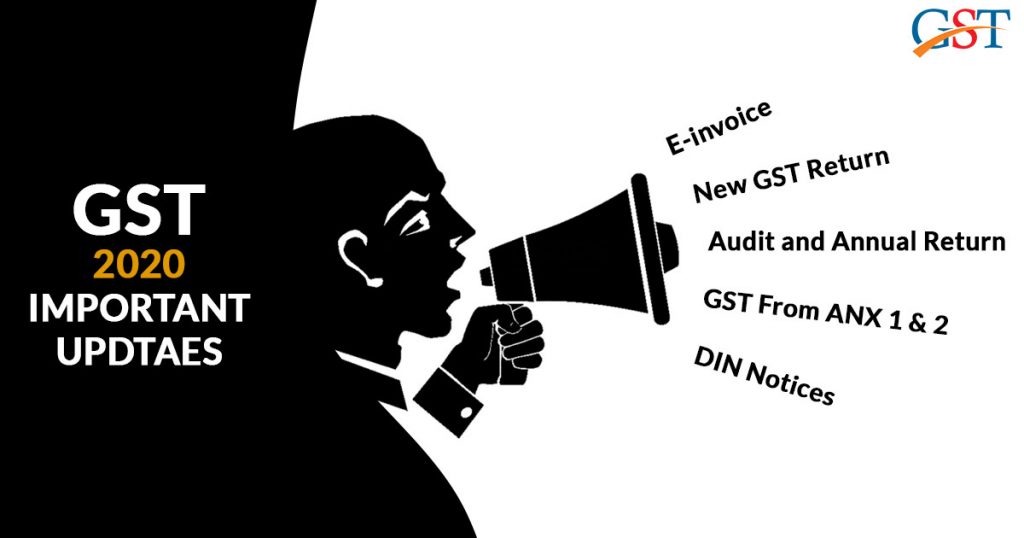
The Government stands on its resolution to make the GST system robust and efficient. There are a number of changes waiting to be implemented and new formats to be introduced in order to make the system more responsive and taxpayer-friendly.
You can check here the list of the new updates under GST 2020, including the ones that are already made and the ones that are expected to be introduced in the new year.
GST E-invoice System Mandatory
Taxpayers having an annual turnover exceeding Rs 100 crore need to comply with the new e-invoicing system under GST 2020
New Invoice Registration Portal (IRP) in GST 2020
Invoice Registration Portal will be introduced which will be generating e Invoices by the invoices uploaded by suppliers. IRP will be sending the e-invoices to the suppliers and recipients.
New GST Return Filing System
Simplified automated GST Return will be implemented from 1st April 2020 for all taxpayers. This new GST return system
GST Form Annexure 1 and Annexure 2
GSTR1 will be replaced by Annexure 1 of Outward Supplies
Restriction on the Claim of ITC
ITC in respect of invoices or debit notes which are not reflected in taxpayers’ form GSTR 2A shall be restricted to 10% of eligible ITC in the form GSTR 2A
e-Way Bill and GSTR 1 Filing
Non-filing of GSTR1 for two consecutive periods will block the generation of the e-way bill. Thus, the regular filing of GSTR1 and GSTR 3B will be essential in the new year.
Waiver of Late Fees for Non-Filing of GSTR 1
If the taxpayer has failed to file GSTR1 form July 2017 to November 2019, then the taxpayer can file such a return before 10th January 2020 to avoid tax being deducted.
GST Audit and Annual Return
The due date for filing the GST Annual Return
DIN Notices and e-Scrutiny
In order to check any significant changes in deviations in returns, there will be large scale e-Scrutiny and e-Assessment of notices with DIN (Director Identification Number) for the returns from July 2017.
GSTN Network will be Engineered Further with Taxpayer Centric Services
Services like reminders of return filing, the status of a refund, ITC Claim mismatches are coming up to increase transparency and effectiveness in the GST system.
These and many other changes are likely to make GST a system that can have all the details related to the taxation of Goods and Services in a manner that is easy to comprehend and compile. The Government is making progressive changes in this direction with a timeline. This shows their commitment to make GST a highly effective, transparent and efficient system.